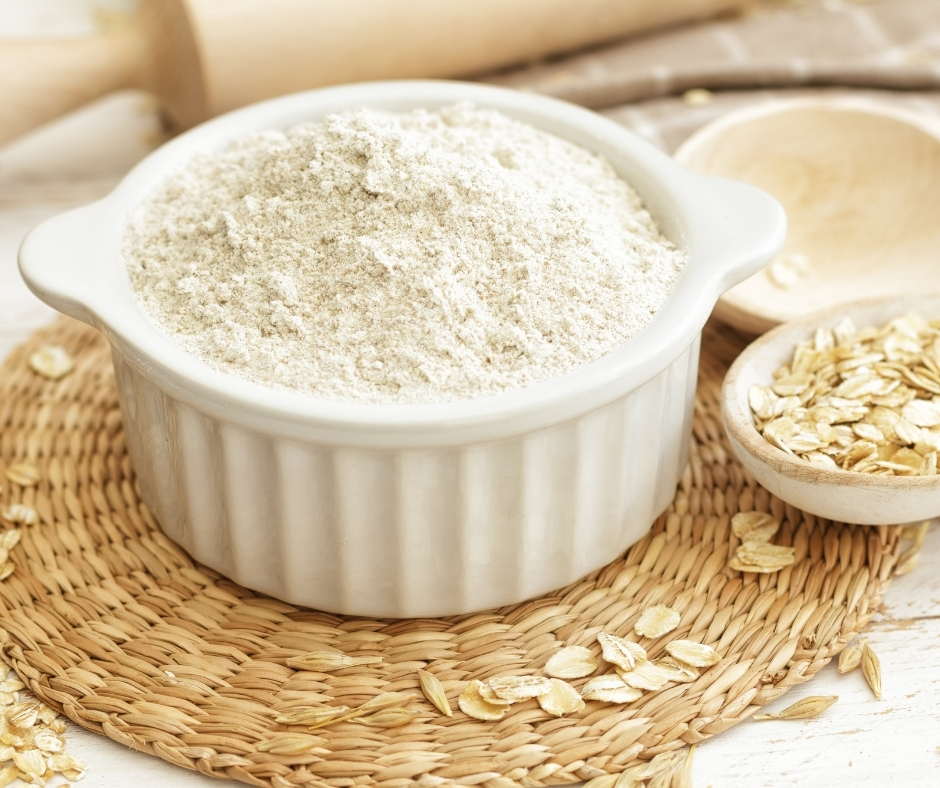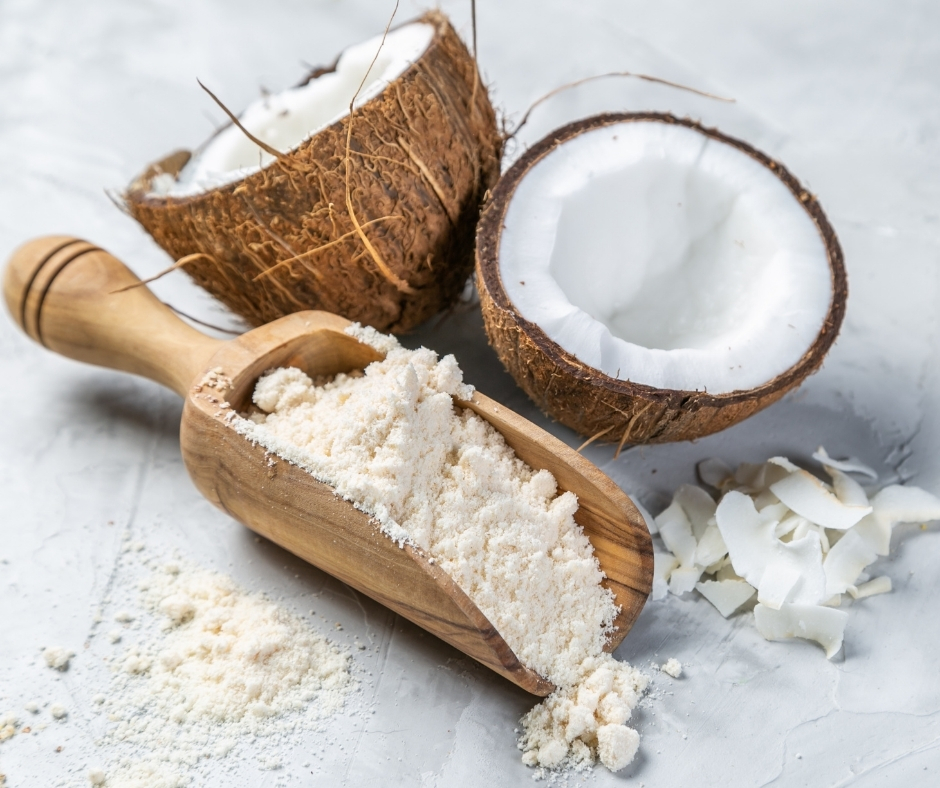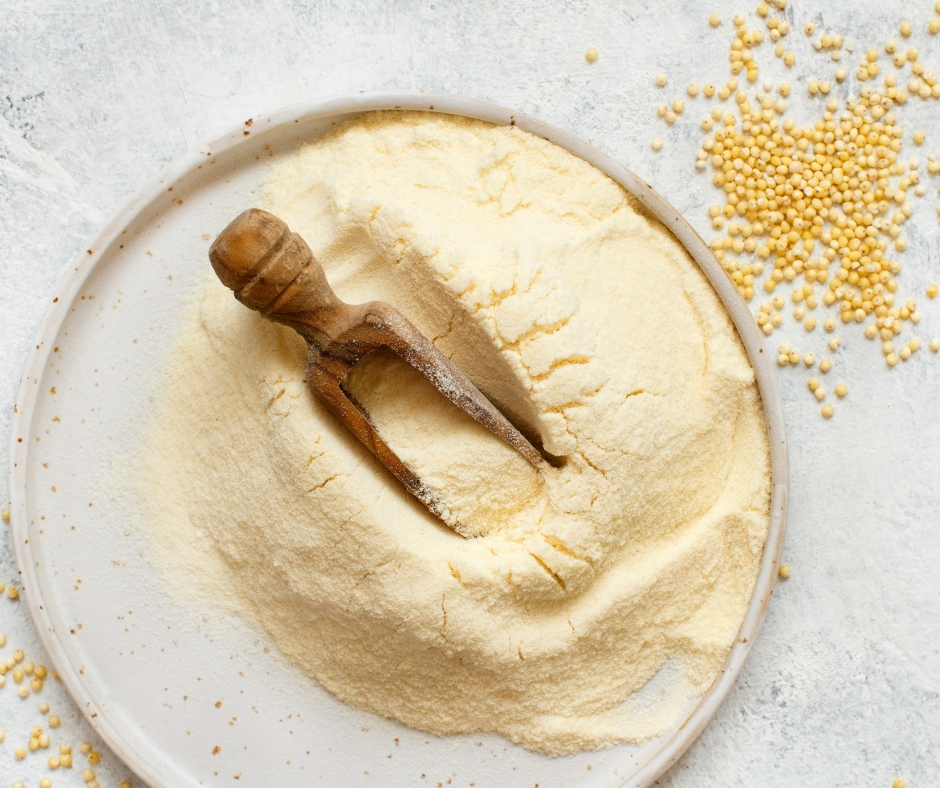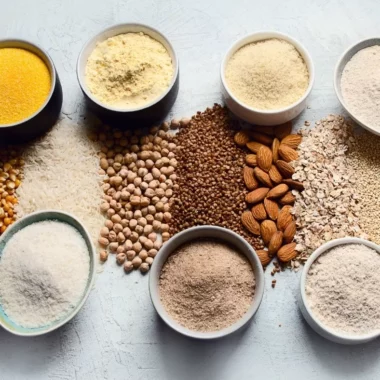Flour is present in foods all around us. It is a staple ingredient used to create foods like bread, pasta, desserts, soups, and sauces. Unfortunately, most people don’t realize how vital flour is until they can no longer consume it. Fortunately, there are several gluten-free flours available on the market.
White Rice Flour
White rice flour is milled from white rice. It is white in color with a neutral, relatively flavorless taste and smooth texture. Additionally, there is also sweet white rice flour. It has a higher starch content and is used to make sticky rice in Thai restaurants.
White rice flour is used to make cakes, noodles, breads, thicken sauces, as a binder, as a coating for fried foods. Unlike brown rice flour, white rice flour contains little micronutrients as the husk and bran are removed during processing.
Sorghum Flour
Sorghum flour comes from a historic cereal grain cultivated over 5,000 years ago. Sorghum is gluten-free, and it’s the world’s fifth-most important cereal crop.
Sorghum flour is light in color with a similar texture to wheat berries. Sorghum has a mild, earthy, slightly sweet flavor. Sorghum flour works well with other gluten-free flours as it gives baked goods a dense texture when used on its own.
Sorghum has phenolic compounds such as flavonoids, which have been shown to slow down tumor development. Additionally, the phenolic compounds found in sorghum have potent antioxidant activity in vitro.
Sorghum may also promote gut health and decrease the risks of chronic diseases. Sorghum can also be beneficial for people with diabetes as starches and sugars are released slower than in other grains.

Oat Flour
Milling whole-grain oats produces oat flour. Interestingly, oat flour provides baked goods with more flavor than traditional wheat flour.
In general, oat flour has a mildly sweet, toasty, and nutty flavor. However, it gives baked goods a delicate, almost caramel-like flavor. It also gives baked goods a chewier, softer, moister texture.
Although oat flour can be used on its own, it is best to combine it with other gluten-free flours to achieve the light and fluffy texture of baked goods.
Oat flour possesses high levels of dietary fibers and phytochemicals. Additionally, oats are believed to have hypocholesterolemic and anticancerous properties.
Moreover, oats are an excellent source of protein, minerals, lipids, and β-glucan. Research studies show that oats can affect various non-communicable diseases like cardiovascular disease, diabetes, obesity, and hypertension.
Teff Flour
Teff flour is the smallest grain in the world. It is about 1/100 the size of a kernel of wheat. Teff is available in multiple colors including white, dark brown, or red.
Lighter varieties of teff have a subtle flavor, while darker types present a deep earthy flavor. Teff flour is used in breads, pancakes, cereals, and snacks.
Though it is best to combine teff with other gluten-free flours, approximately one-quarter to half of the wheat flour in a recipe can be replaced with teff flour.
Teff is beneficial for improving hemoglobin levels in the human body. It also helps to counter malaria, incidences of anemia, and diabetes.
Compared to other grains, teff is a rich source of iron and minerals such as calcium, copper, and zinc. Recent evidence suggests teff is a vital source of bioactive compounds, including polyphenols. It is very rich in flavonoid derivatives, which are rare in other grains.
Chickpea Flour
Chickpeas belong to the legume species. Known by multiple names such as gram flour, garbanzo flour, and besan flour, chickpea flour is manufactured by grinding dried peas.
With a nutty flavor and coarse texture, chickpea flour is a staple ingredient in Middle Eastern and Indian cuisine. In fact, chickpea flour is an ingredient in falafel, hummus, and socca, which is a flatbread.
Chickpea flour is also a rich source of plant-based protein. Chickpeas protein content has been deemed superior to other pulses.
Chickpea flour is also rich in essential vitamins such as riboflavin, niacin, thiamin, folate, and the vitamins A precursor, β-carotene. Chickpea flour possesses potential health benefits like reducing obesity, type 2 diabetes, and prevention of colon cancer.

Coconut Flour
Coconut flour is a popular flour manufactured from dehydrated coconut meat. Coconut flour has a mild coconut flavor. Coconut flours texture is light, and it closely resembles wheat flour.
It is perfect for yeast or quick breads and desserts. Coconut flour may play a role in improving digestion, regulating blood sugar, protecting against diabetes, preventing heart disease and cancer, and stimulating weight loss.
Tapioca Flour
Tapioca flour is extricated from the starchy liquid found in the South American cassava. Tapioca flour is flavorless and is usually used as a thickener in pies, soups, and sauces. Additionally, tapioca flour can be mixed with other gluten-free flours to make breads.
Tapioca flour is starch resistant. Starch-resistant foods offer potential health benefits for colonic health and lipid and glucose metabolism.
Besides being starch-resistant flour, tapioca flour has limited nutritional significance. Its caloric content is considered empty in comparison to other gluten-free flours.

Millet flours
Millet flour is made by grinding small-seeded grasses known as millet. It has a mild, somewhat bitter flavor and is light in color flour.
It works best when used in cookies, muffins, or cornbread. However, it should be combined with other gluten-free flours to offset its bitter taste.
Millet is rich in calcium, dietary fiber, and phenolic compounds. It also possesses potential health benefits, such as anti-diabetic, anti-tumerogenic, atherosclerogenic effects, antioxidant and antimicrobial properties. Furthermore, millet flour may prevent cancer and cardiovascular diseases, reduce tumor incidence, lower blood pressure, risk of heart disease, cholesterol, and rate of fat absorption.
In Summation
Though these flours are marketed as gluten-free, it is always best to ensure it has a gluten-free label and investigate where it was processed.






